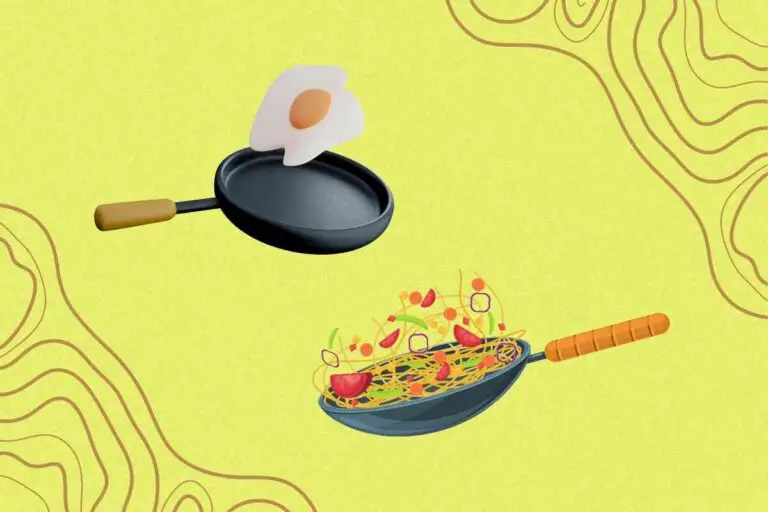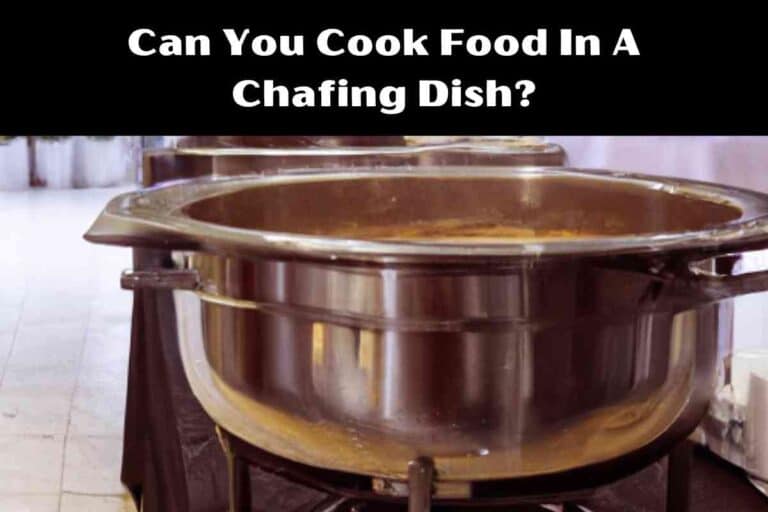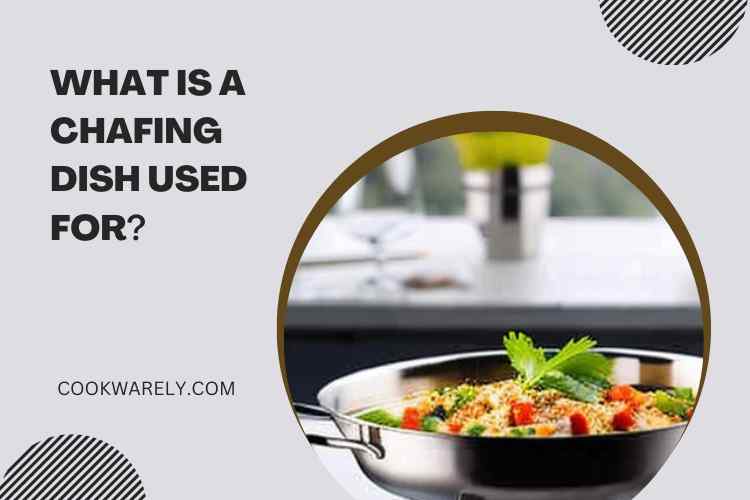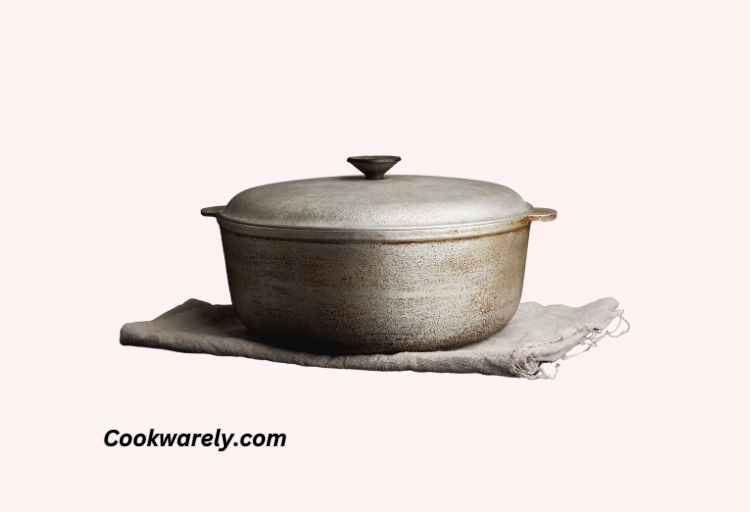Can Your Cast Iron Skillet Go In The Oven? 9 Considerations!
Cast iron skillets are like the unsung heroes of the kitchen. They’re tough, versatile, and can last for generations if you treat them right. One of the lesser-known tricks up their sleeve is their ability to go into the oven.
Yes, it is safe to use cast iron skillets in an oven. Their durability and heat retention make them suitable for baking and roasting, but be cautious with handles and broiling. Follow manufacturer guidelines for specifics.
- Safe Oven Use: Cast iron skillets can be safely used in the oven due to their durability and heat retention properties, making them versatile for baking and roasting.
- Handle and Broiling Caution: It’s important to exercise caution with the skillet’s handles, and broiling should be approached carefully, as high direct heat can affect some cast iron skillets.
- Manufacturer Guidelines: To ensure safe and effective oven use, always follow the specific manufacturer’s guidelines and recommendations for your cast iron skillet.
9 Considerations When Using Cast Iron Skillets in the Oven
| Consideration | Description |
|---|---|
| Material | Ensure your skillet is made of cast iron or other oven-safe materials like stainless steel, copper, or hard-anodized aluminum. |
| Handles and Lids | Check if handles and lids are heat-resistant; some materials can’t handle high oven temperatures. |
| Maximum Oven Temperature | Be aware of your skillet’s maximum oven-safe temperature, which may vary based on material and construction. |
| Preheating | Preheat your skillet with the oven to avoid thermal shock, which can lead to cracking. |
| Weight | Cast iron skillets are heavy, so use oven mitts and handles with care to prevent accidents. |
| Lid Usage | Consider using a lid when baking to trap steam and moisture for juicier dishes, if the recipe calls for it. |
| Broiling | Check if your skillet is suitable for broiling, as high direct heat can affect some cast iron skillets. |
| Seasoning | Regularly season your cast iron skillet to maintain its nonstick surface and prevent rust. |
| Storage | Store your cast iron skillet in a dry place, and consider placing a paper towel inside to absorb moisture and prevent rust. |
Key Takeaways
- Location Matters: Look for the oven-safe symbol on the bottom of your cookware; this is where manufacturers commonly place it.
- Understand the Symbol: Familiarize yourself with the specific oven-safe symbols used by the manufacturer of your cookware and the associated maximum temperature.
- Follow Recommendations: Always adhere to the manufacturer’s recommendations for oven use to prevent damage and ensure safety.
- Confidence in Oven Use: Checking for the oven-safe symbol provides confidence that your cookware can handle oven cooking, enhancing your culinary options.
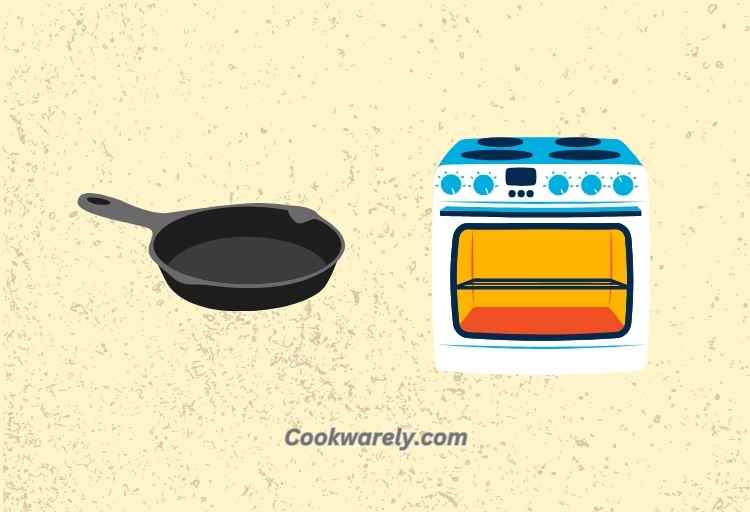
Can Your Cast Iron Skillet Go In The Oven?
Can You Put a Skillet in the Oven? Cast iron skillets are typically oven-safe due to their durable construction.
Ensure your skillet is made of cast iron or other materials like stainless steel, copper, or hard-anodized aluminum that can withstand oven temperatures.
1. Handle and Lid Considerations
Check the handles and lids of your skillet for heat resistance.
Some skillets may have handles or lids made of materials that can’t handle high oven temperatures; be cautious when using them.
2. Maximum Oven Temperature
Be aware of the maximum oven-safe temperature for your cast iron skillet.
Different materials and constructions may have varying temperature limits, so follow manufacturer recommendations.
3. Preheating the Skillet
To prevent thermal shock and potential cracking, preheat your cast iron skillet along with the oven before use.
4. Handling the Weight
Cast iron skillets are heavy; use oven mitts or pot holders when handling them.
Be careful when placing a hot skillet on a cold surface, as rapid temperature changes can lead to warping.
5. Lid Usage for Moisture Retention
When baking or roasting, consider using a lid on your skillet.
Using a lid can trap steam and moisture, resulting in juicier dishes if the recipe calls for it.
6. Broiling Caution
Check your skillet’s suitability for broiling.
High direct heat from broiling can affect some cast iron skillets, particularly those with certain coatings.
7. Seasoning for Nonstick Surface
Regularly season your cast iron skillet to maintain its natural nonstick surface.
The seasoning process involves applying a thin layer of vegetable oil and heating the skillet in the oven.
8. Proper Storage
Store your cast iron skillet in a dry place to prevent rust.
Placing a paper towel inside the skillet can help absorb moisture and further protect against rust.
Is it Safe to Put a Skillet Other Than Cast Iron in the Oven?
Using a skillet other than cast iron in the oven can be safe, but it’s essential to consider the skillet’s material and construction. Some materials, like stainless steel, copper, and hard-anodized aluminum, are generally oven-safe and can withstand high temperatures.
However, it’s crucial to check the manufacturer’s recommendations for specific temperature limits, as they can vary among different brands and models.
Additionally, assess the handles and lids of the skillet; if they are made of heat-resistant materials, you’re likely in the clear for oven use.
But beware of skillets with handles or lids made from non-heat-resistant materials, such as silicone, plastic, or wood, as they may not fare well in the oven’s heat.
Overall, with due diligence and attention to the skillet’s material and features, you can safely use a variety of skillets in the oven for a range of cooking and baking purposes.
What About Enameled Cast Iron in the Oven?
Enameled cast iron cookware can also be used in the oven, but there are some considerations to keep in mind. Enameled cast iron, unlike traditional seasoned cast iron, has a porcelain enamel coating on its surface.
This coating provides several benefits, including resistance to rust and a smooth, non-reactive cooking surface.
When using enameled cast iron in the oven:
- Temperature Limits: Enameled cast iron is generally safe for oven use at temperatures up to 500°F (260°C). However, it’s essential to check the manufacturer’s guidelines for the specific temperature limits of your cookware, as they can vary between brands.
- Broiling Caution: While enameled cast iron is suitable for most oven cooking methods, be cautious with broiling. High direct heat from a broiler can damage the enamel coating, so it’s best to avoid broiling in enameled cast iron skillets.
- Preheating: Preheating an enameled cast iron skillet is a good practice when baking or roasting to prevent thermal shock and maintain even cooking.
- Cleaning: Cleaning enameled cast iron is relatively easy. You can use mild soapy water without worrying about damaging the seasoning. However, avoid using abrasive cleaners or scouring pads, as they can scratch the enamel.
- Flavor Preservation: Enameled cast iron is excellent for dishes that require minimal flavor transfer from the skillet, as the enamel coating prevents interaction with acidic ingredients, making it suitable for dishes like tomato-based sauces.
Benefits of Using Cast Iron Skillets
Let’s start with the good stuff – why should you consider using your trusty cast iron skillet in the oven?
- Durability: Cast iron cookware is built to last. With proper care, it can serve you for a lifetime and even be passed down to the next generation. You won’t need to replace it every few years like some other types of cookware.
- Heat Retention: Cast iron is excellent at retaining heat. This means it heats evenly and stays hot for a long time. When you transfer your skillet from the stovetop to the oven, it maintains a steady temperature, which is ideal for baking and roasting.
- Natural Nonstick: Seasoned cast iron skillets have a natural nonstick coating. This means your food won’t stick to the pan, making it easier to cook delicate dishes without them falling apart.
- Versatility: Cast iron skillets are incredibly versatile. You can use them on the stovetop, in the oven, on the grill, and even over an open flame. There are not many kitchen tools that can do all of that.
Determining Oven Safety
Now, let’s address the important question: Can you put your cast iron skillet in the oven? The answer is generally yes, but there are some key factors to consider:
- Material: Most cast iron skillets are oven-safe. However, other materials like silicone, plastic, or wood handles can’t handle the heat of the oven. So, check your skillet’s construction.
- Handles and Lids: If your skillet has handles or lids made of heat-resistant materials, you might be limited in how hot you can go in the oven. Always check the manufacturer’s guidelines for specifics.
- Broiling: Be cautious about using your skillet under a broiler. The high, direct heat can be too much for some cast iron skillets, especially those with enameled coatings.
Materials and Construction
Before you pop your skillet in the oven, let’s talk about materials. Cast iron isn’t the only option; there are a few others that can handle the heat:
- Copper: Copper cookware is oven-safe and excellent for precise temperature control. Just be aware that it can be high-maintenance when it comes to cleaning.
- Stainless Steel: Stainless steel skillets are known for their durability and can usually handle oven temperatures up to 500°F (260°C). They’re great for browning and creating delicious pan sauces.
- Aluminum: Hard-anodized aluminum skillets are lightweight and heat up quickly. They are also safe for oven use up to 500°F (260°C).
- Nonstick Cookware: While most nonstick pans can go in the oven, they often have a lower maximum temperature, typically around 350°F (177°C). Avoid using them for broiling.
Using Cast Iron Skillets in the Oven
Now that you know your skillet can handle the oven, here’s how to use it safely:
- Preheat: If your recipe calls for a preheated oven, make sure your skillet is already in there. Sudden temperature changes can cause thermal shock and crack your cast iron.
- Handle with Care: Cast iron skillets are heavy. Use oven mitts when handling them, and be cautious about placing a hot skillet on a cold surface as it can warp.
- Lid or No Lid: Depending on your recipe, you might want to use a lid on your skillet when it’s in the oven. This helps trap steam and can result in juicier dishes.
- Broiling: If you need to broil, check your skillet’s specific recommendations. Some can handle it, but others may not.
Care and Maintenance
Taking care of your cast iron skillet is crucial to keep it performing well. Here’s how to do it:
- Rinse and Dry: After each use, rinse your skillet with hot water and gently scrub it. Avoid using soap, as it can strip away the seasoning.
- Seasoning: To maintain that nonstick surface, apply a thin layer of vegetable oil to the skillet’s interior and wipe off any excess. Then, place it upside down in a preheated oven at 350°F (177°C) for an hour. This process keeps your skillet in tip-top shape.
- Storage: Store your cast iron skillet in a dry place. You can even put a paper towel in it to absorb any moisture and prevent rust.
Oven-Safe Symbols and Manufacturer Recommendations
Manufacturers often provide guidelines on how to use their products safely in the oven. Look for symbols or markings on the bottom of your skillet to confirm its suitability for oven use.
Keep in mind that these symbols can vary among different brands, so always check the specific recommendations for your cookware.
Checking for an oven-safe symbol on your cookware is a crucial step to ensure safe oven use. Many cookware manufacturers include specific symbols or markings on their products to indicate their suitability for oven cooking.
These symbols serve as a quick reference, providing valuable information to consumers. When inspecting your cookware for this symbol, look for the following:
Firstly, locate the bottom of your cookware, where manufacturers commonly place these symbols.
The symbol is typically a small image or text that represents an oven with a maximum temperature listed next to it. This temperature represents the highest heat level that the cookware can safely withstand in the oven.
Secondly, these symbols can vary between different brands and product lines. Therefore, it’s essential to familiarize yourself with the specific symbols used by the manufacturer of your cookware.
Most reputable brands provide detailed instructions and symbols in the product manual or packaging.
Once you’ve identified the oven-safe symbol and its associated temperature limit, it’s crucial to adhere to these guidelines.
Exceeding the recommended temperature can potentially damage the cookware, compromise its performance, or even pose safety risks.
Therefore, always follow the manufacturer’s recommendations regarding oven use to ensure the longevity and effectiveness of your cookware.
Conclusion
Can a cast iron pan go in the oven? To sum up, your cast iron skillet can indeed go in the oven, and it opens up a world of possibilities for your cooking adventures. Whether you’re baking cornbread, roasting a chicken, or finishing a frittata, your cast iron skillet has your back.
Just remember to treat it with care, maintain it properly, and follow any manufacturer recommendations for safe oven use. With the right precautions, your cast iron skillet will continue to be your trusty kitchen companion for years to come.

